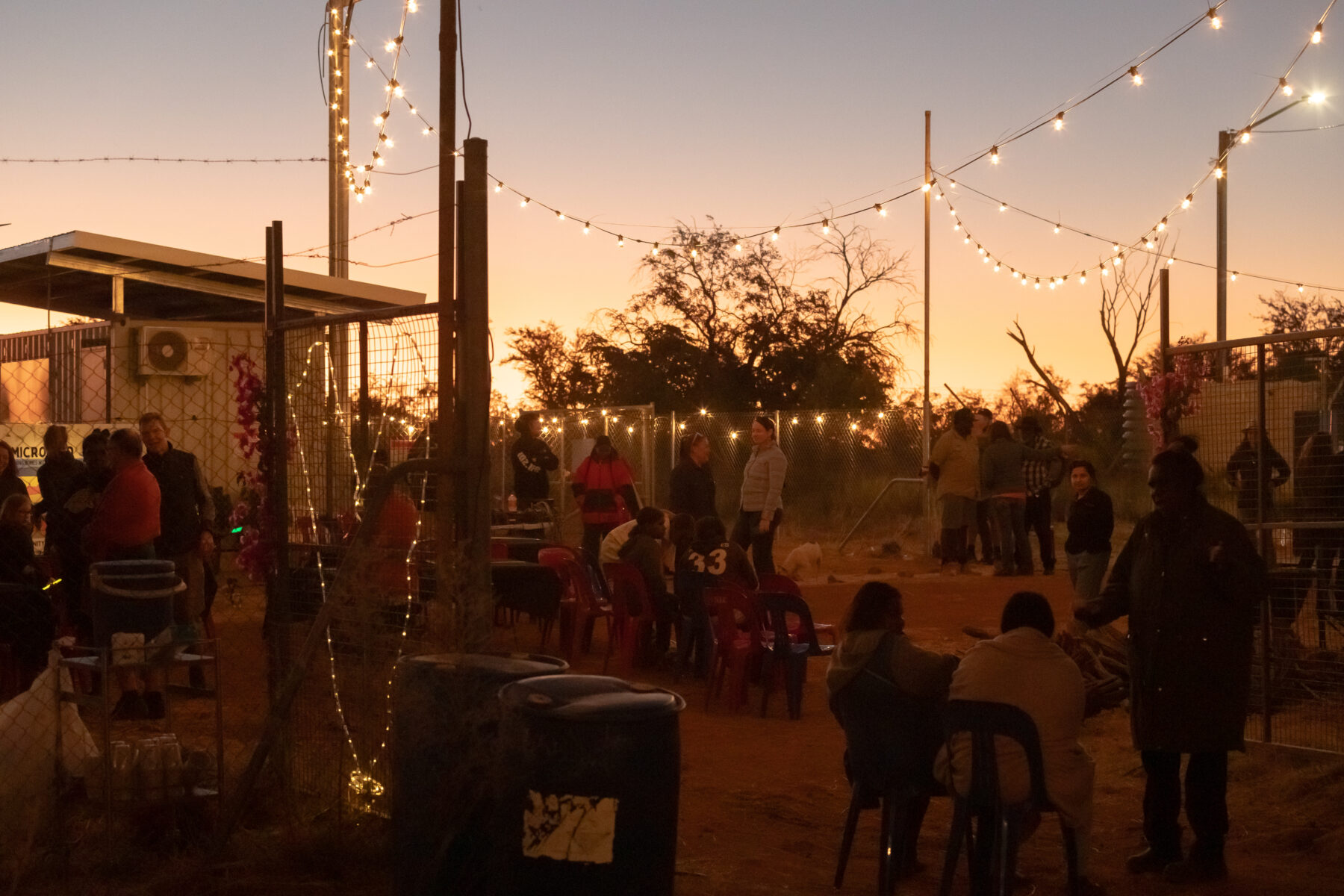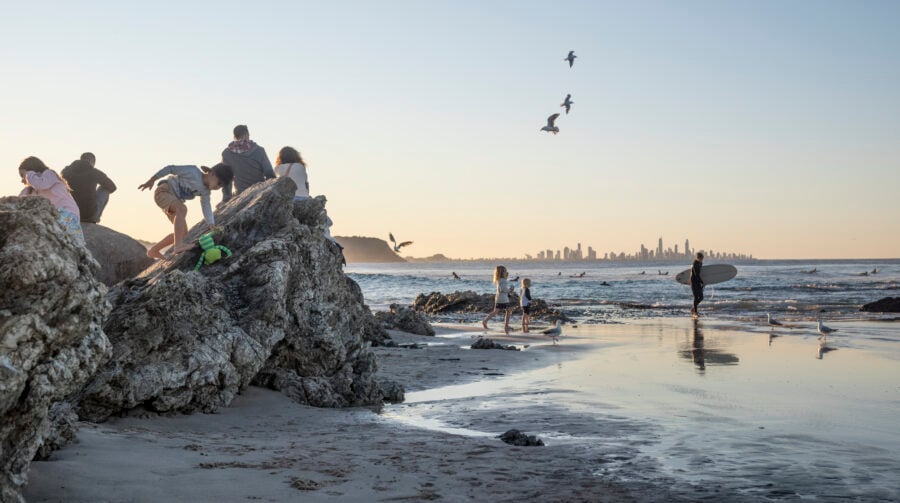The concrete is hot beneath Nicole Frank’s feet as she pushes her newborn strapped into a pram up the Stuart Highway, in Tennant Creek, almost 1000km south of Darwin. Glowing red numbers on the digital thermometer on the town clock read 39°C. The time is 10.15am.
Just 20 minutes earlier Nicole’s electricity cut out, so she’s off to top up her power card. She pushes the pram through the plastic doorway streamers of the store where she can reload the card and then heads home, hoping $60 worth of credit will get her through the next few days.
A couple of blocks away on Skipper Street, an elderly woman in a wheelchair is doting over her grandchild. She passes the baby back to its mother before reaching into her pocket and taking out a $50 note. “Food or electricity?” the two women ask each other. They decide on electricity.
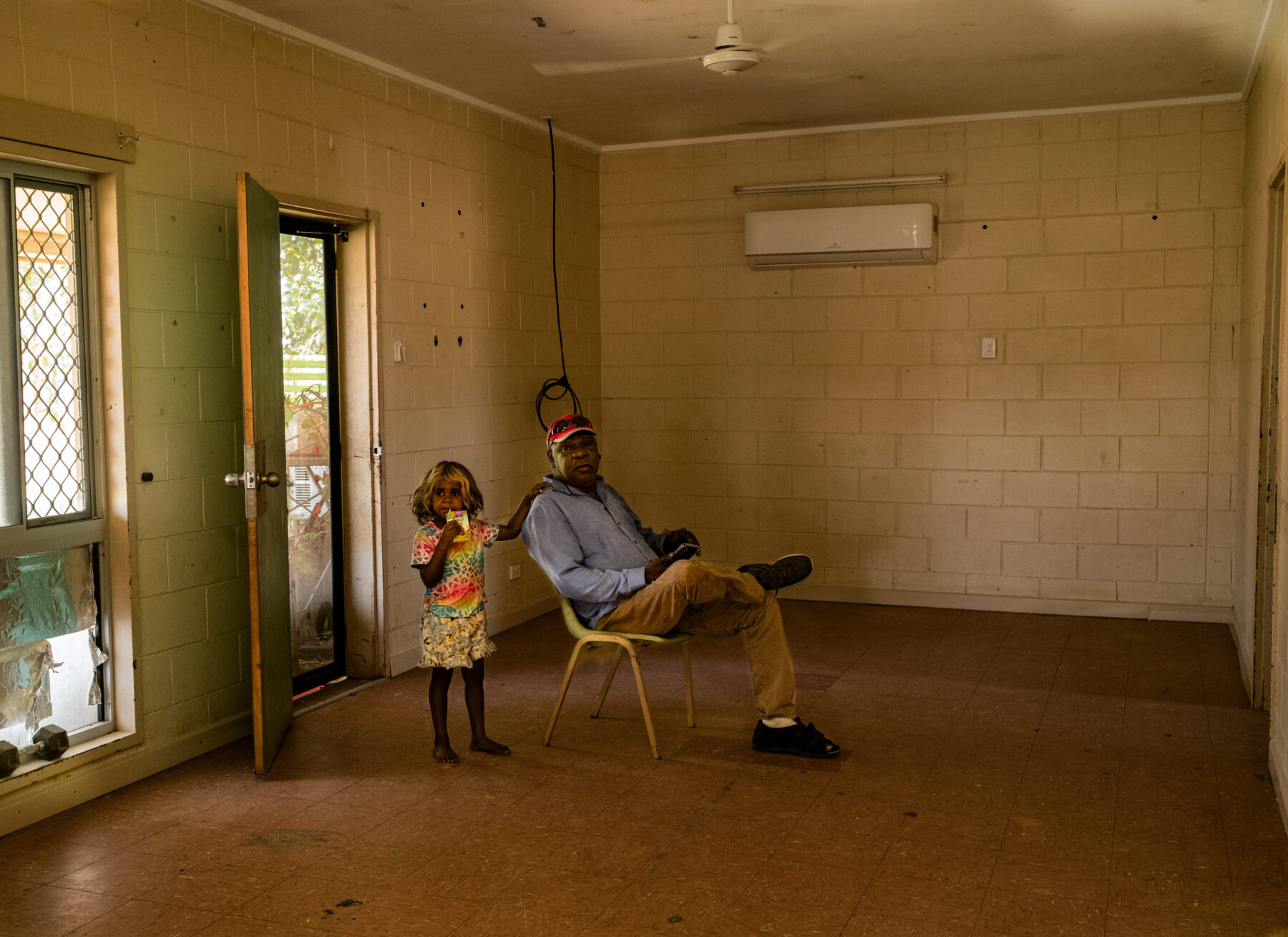
On the outskirts of town, at Norman Frank Jupurrurla’s house, a TV news crew has turned up. They follow him around, filming while he proudly flicks switches, turning on lights, fans and air con all at once. He swings open the fridge door and beams as he explains how good it is now that his medicines won’t spoil. He flips up the cover on the meter box. “Look,” he says pointing to the digital numbers, “see how much credit I’ve got!”
He picks up a handful of old power cards strewn across the bottom of the meter box and fans them in his hands like a deck of cards for the camera, then explains how they work. “They’re like a mobile phone,” he says. “You pay credit as you go. When you run out of credit, the power cuts off. It just goes out.”
Norm is the first person living in Indigenous social housing in the Northern Territory to have solar panels. They sit on his roof shining brilliantly like prized diamonds. “How’d you get that solar up there?” everybody asks. “A whole lot of shaking the bush,” he tells them.
Spreading the solar boom
Australia is a leader in the uptake of solar power. One in three Aussie households is connected to rooftop solar, either through self-funding or partly funded through federal and state government initiatives such as the Small-scale Renewable Energy Scheme.
The solar boom is particularly prevalent in the towns and cities along the edges of the continent, where most people own their own homes and can invest in, and decide on, their own infrastructure. But it’s a different story in the interior, especially in remote and regional First Nations communities where most residents live in government-owned public housing.
Despite being in one of the world’s most ideal solar locations with more than 300 days of sunny skies a year, Tennant Creek’s Indigenous population is living day-to-day in deeply entrenched energy poverty.
So, Norm simply asked: “If everybody else has got that solar, why can’t us blackfellas in the desert have it too?”
When his question didn’t get him anywhere, he decided to – as he puts it – ‘shake the bush’. That’s when he teamed up with Original Power, a First Nations-led not-for-profit focused on overcoming the structural barriers that prevent First Nations communities from participating in, and benefiting from, the transition to clean energy.
Original Power selected Norm’s household to be the demonstration house in a trial project, which focused on combining existing prepayment meters with rooftop solar. If the trial is successful, it could prove pivotal in gaining access to renewable energy for Australia’s 15,000 First Nations households that rely on prepaid power cards.
But putting solar onto the roof of Indigenous social housing had never been done before, and it was far from a straightforward process. It required a series of bureaucratic barriers to be overcome. Firstly, it challenged NT regulatory agencies, which argued that prepaid meters and rooftop solar couldn’t coexist.
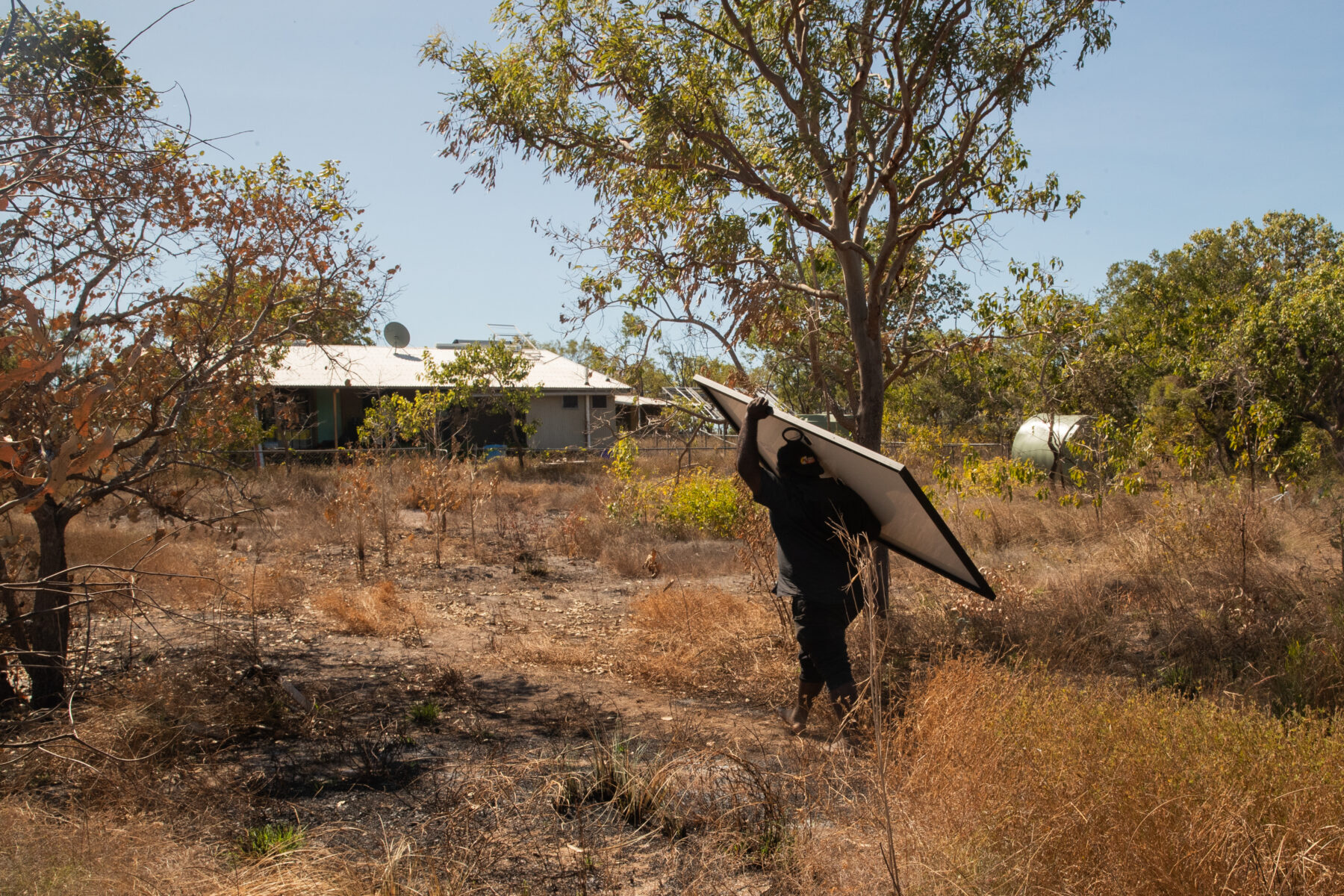
Up until Norm’s place, previous requests to the NT Government’s Power and Water Corporation to connect rooftop solar from prepayment customers were shut down by an automatic ‘no’.
Round two was with Norm’s landlord, the NT Department of Housing, Local Government and Community Development, which was uncomfortable about allowing any new fixtures on the home. But after months of negotiations and building inspections to ensure the roof was capable of hosting solar panels, an agreement was eventually struck and the panels were installed – with a clause that Norm would remove the panels at his own cost at the end of his tenancy.
The next round was with PowerWater, the NT Government’s power and water agency. Norm says a padlock placed over the smart meter’s solar input was stopping the house from connecting to the grid. Because there wasn’t a system in place for prepaid power customers to access rooftop solar, there were long delays while PowerWater and the energy retailer, Jacana, navigated and negotiated paperwork regarding energy exports and feed-in tariffs.
Finally, during one of the hottest heatwaves on record, Norm was given the go-ahead for the connection. But the padlock remained. “So, you know what I did?” he asks before revealing his knockout punch. “I reached into my toolbox and got out my angle grinder.”
“And the world didn’t cave in,” says Lauren Mellor, Original Power’s Clean Energy Communities program director. “In fact, Norm’s household completely resolved its energy challenges, going from an average of 24 disconnections in a year to zero and significantly reducing household energy costs. But you have to make sure you get every detail right. There are clauses to watch out for before signing off…otherwise it could be another year of setbacks.”
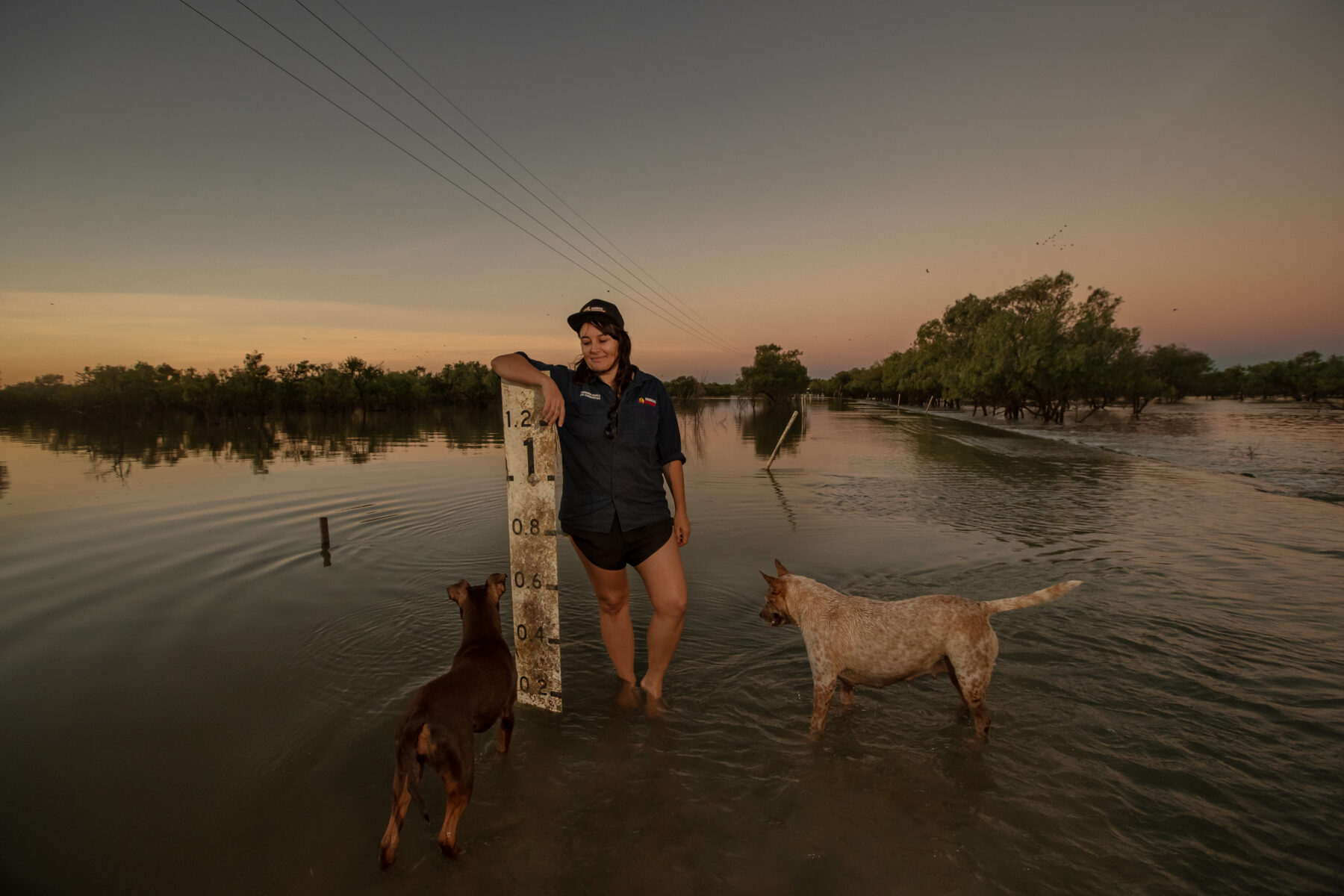
I’m travelling with Lauren to Original Power’s next big challenge: the remote community of Marlinja, more than 600km south of Darwin, where it’s hoped it will be proven that solar and prepayment meters can work on a community scale. Lauren has been trying to get out here for months, but because of the biggest wet season on record since Cyclone Tracy hit in 1974, she has had to wait.
After more than five years of planning, the Marlinja community is preparing to celebrate the launch of its own solar farm and battery – the first Indigenous community in Australia to achieve this. The solar farm will mean an end to costly diesel power and constant disconnections. For residents, it’s literally a case of taking back the power by providing their own homes with electricity.
Remote realities
Daily life in isolated remote communities like Marlinja can be extreme: the houses are not properly insulated, and there are often running-water issues that are compounded by isolation and lack of access to essential services.
When the power goes out, life becomes even more extreme. It’s when water has to be collected from the creek; it’s when kids can’t shower for school; it’s when cooking has to be done outside; it’s when fridges blow up; and it’s when vital medicines spoil.
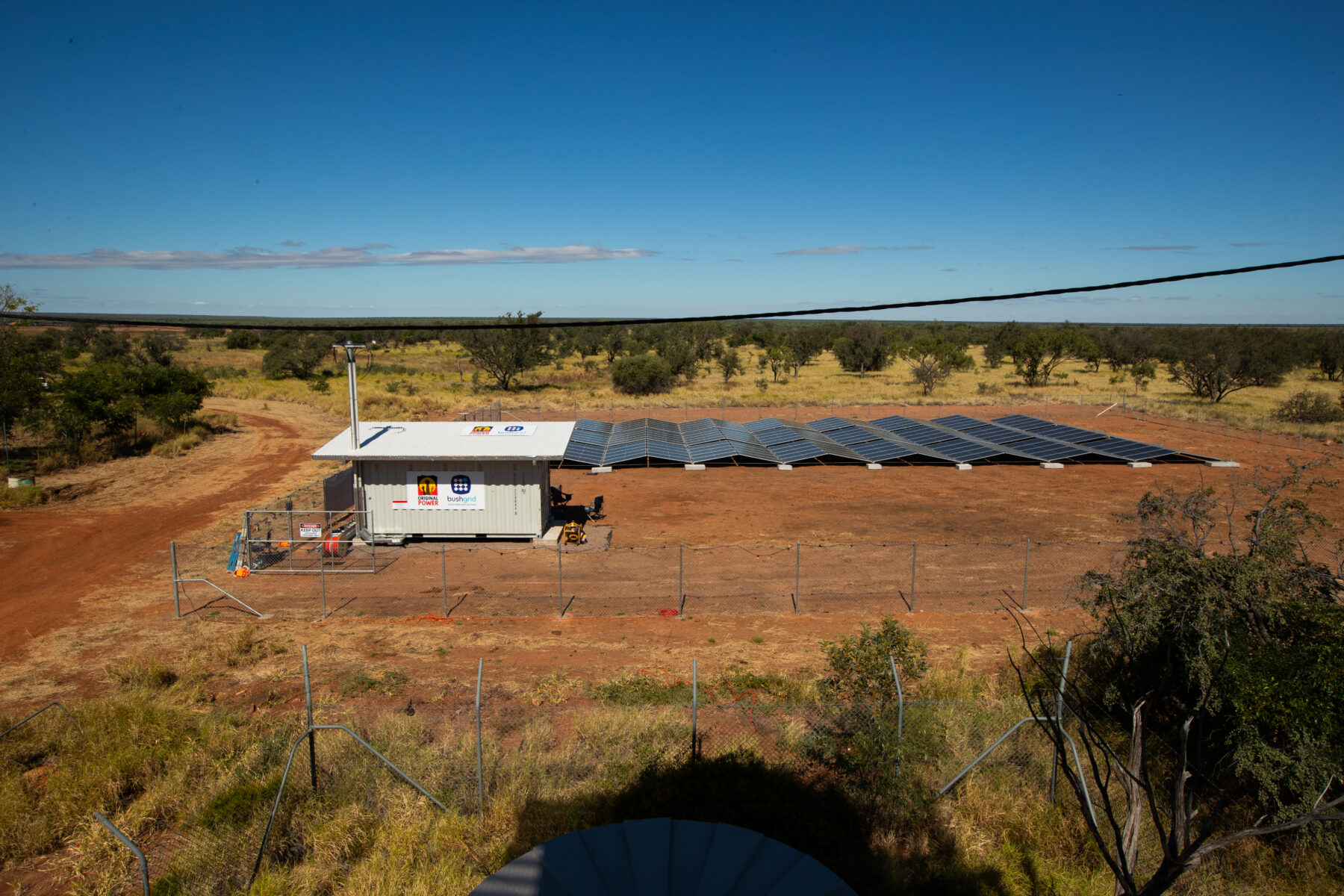
For Marlinja, collaborating with Lauren and Original Power since 2018 has quite literally meant light at the end of the tunnel. By 2021 they had fundraised enough money – $750,000 – to fit out all houses in Marlinja with rooftop solar.
But the NT Department of Territory Families, Housing and Communities, which owns the homes in the remote community, wouldn’t approve rooftop solar on social housing. After a couple more years of surveys, feasibility studies and creative problem-solving, a new plan was hatched for a community solar farm that would charge a community battery and feed electricity into every house in Marlinja.
At the community hall, Chantelle Johns is preparing for the solar-farm launch, eagerly stringing up fairy lights and humming along to R&B, when suddenly the power goes out.
She takes a deep breath, thinking about last wet season when the creek was up and the power was out for so long – a whole month – that utility workers had to be ferried over to fix it.
“They said they couldn’t get in because of the flooding,” Chantelle recalls. “So we brought them across with our own boats, put them in our cars and drove them up here just so they could put it back on for us. Just so they could flick a switch.”
Fortunately, that hasn’t happened this time, and after about 10 minutes the lights come back on. Chantelle breathes a sigh of relief and gets on with the job again. Later in the afternoon, the red dirt road in between the community centre and the solar farm is lit up like a festival.
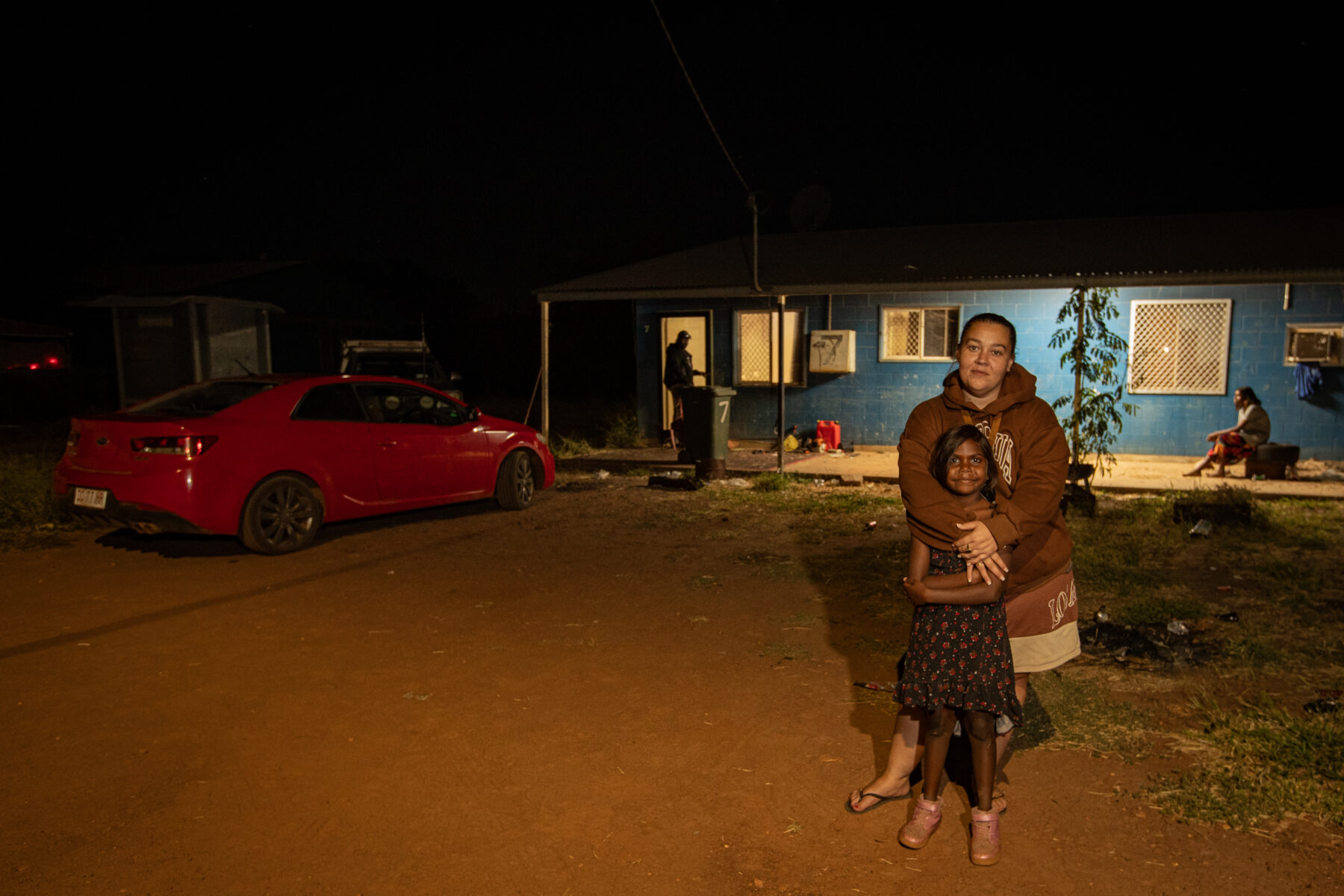
Mudburra Elder Raymond Dimakarri Dixon, who lives in Marlinja, becomes emotional when opening the proceedings to celebrate the installation of the solar farm and new battery. “Wangku is our word for sun,” Raymond says. “From the moment you’re introduced to Country, from the day that you’re born, wangku is always there. That wangku is our light.”
He’s overcome with emotion – and for good reason. This facility means the future of his community. It means there will be no more driving 25km into town to top up costly power cards. It means more money for food and other essentials. And it means an end to disconnections, which translates into cool houses during record heat, fridges that will stay on, and food and essential medicines that won’t spoil.
All these energy-related developments will mean that people can remain at home on Country.
Worth celebrating
Important ceremonies have always taken place at Marlinja. It would have taken about six hours for the mob from the eastern Arrernte community of Santa Teresa, 70km south-east of Alice Springs, to get here. They’ve come to learn about the solar grid.
Norm has travelled up from Tennant Creek, 265km south, invited as a special guest to the opening. He addresses the crowd, telling them he has a dream of seeing solar installed on every Indigenous rooftop in the NT.
“That sun,” he says, pointing his finger to the sky, “he is our medicine. Clean energy – it’s what our people need… It’s been here all along. It is here, it is free, and no-one can take that away.”
The next day, Raymond is sitting on his verandah feeling satisfied, thinking of how his parents would have been proud of everything Marlinja has achieved in the past few years; of how the community stood up against fracking on their lands, and how now they’ve installed the solar grid.
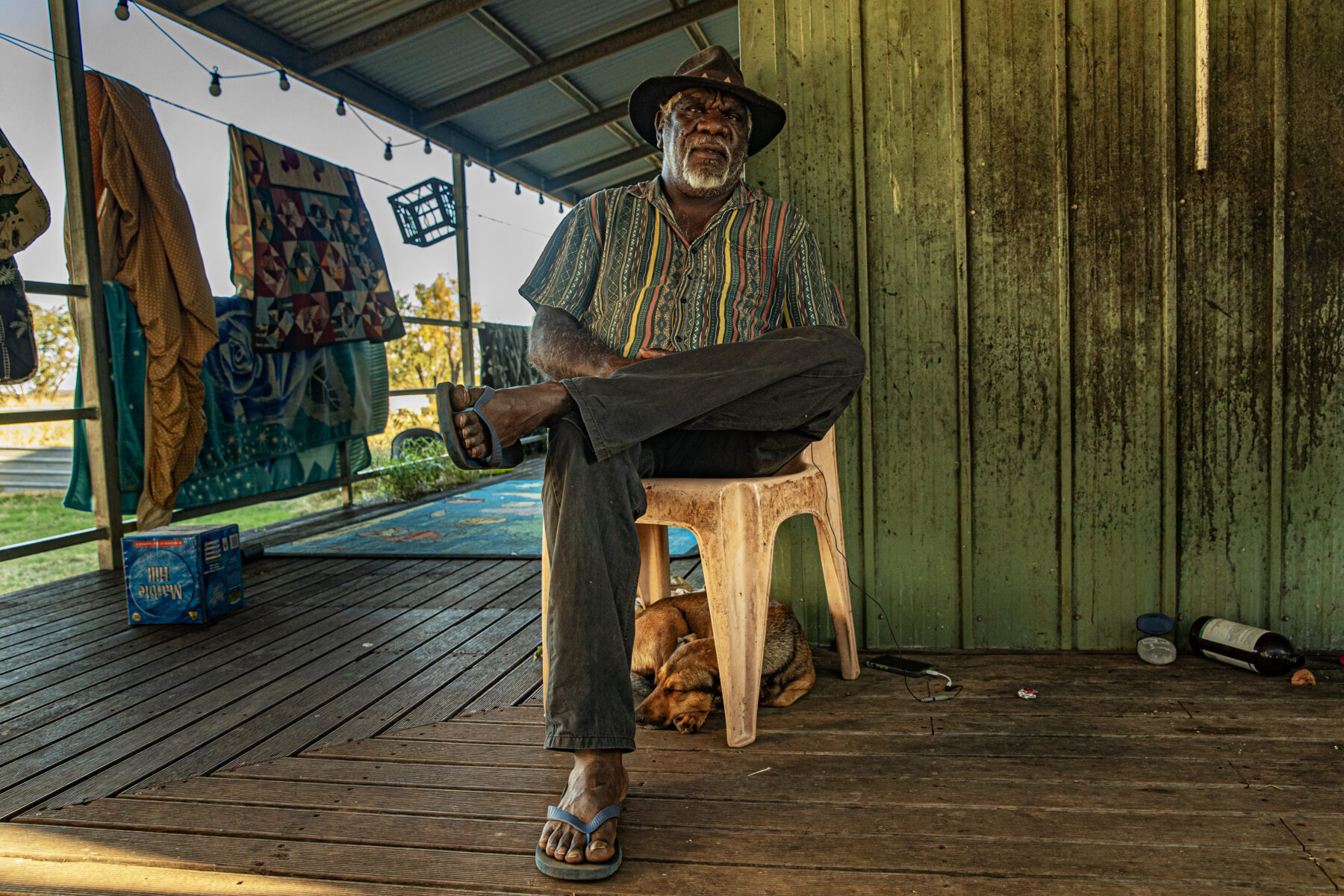
Looking over at nearby Newcastle Waters station on the other side of his fence, he’s reminded of his family’s long, unwavering involvement in historic events. It was on that same station – in 1952, before he was born – that his mother, Lady Dixon, and other domestics signed a petition demanding better living conditions, asking for toilets and showers. They were also desperately concerned that their family remained intact during assimilation times – the times of the vanishing – and demanded that their tribal group not be dispersed.
And then, when Raymond was aged 10, in 1966, his father, Pharlap Dixon, walked off the station in protest. He and the other Indigenous stockmen were fed up with working for only tea, sugar and flour. They wanted the same rights as everyone else.
“It was a big movement, and it started here,” Raymond says proudly. “It was before Wave Hill [the NT station where, in 1966, 200 Gurindji stockmen, domestic workers and their families took strike action]. And it was my father. He was a leader for his family and his tribe. He made that decision.
“My family were always standing up for their rights. That was their legacy. And that legacy we carry on today.”
